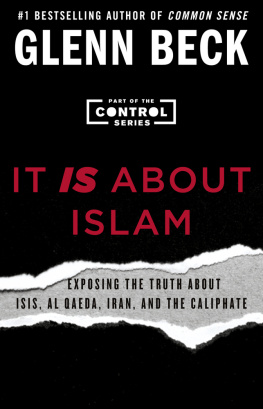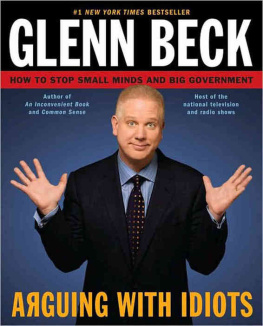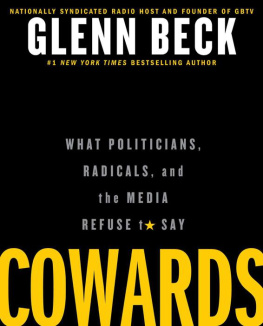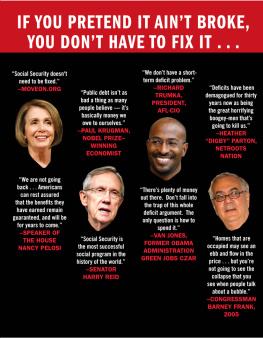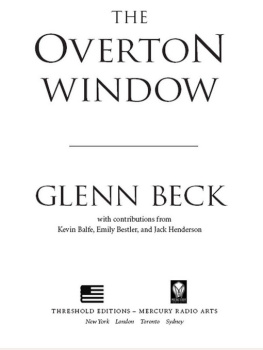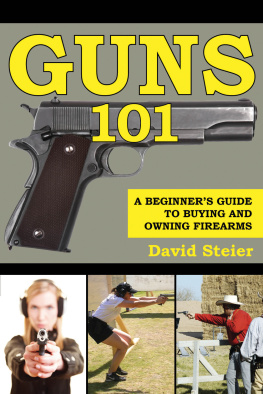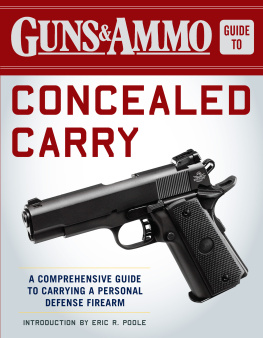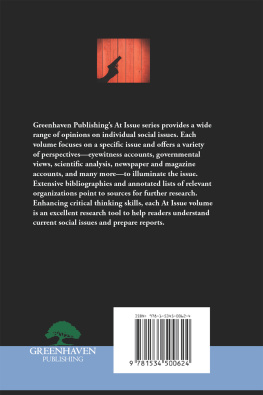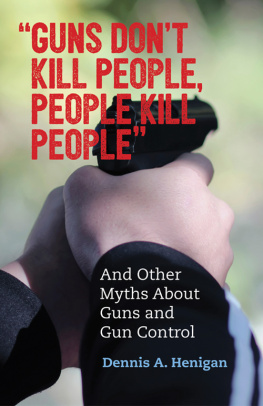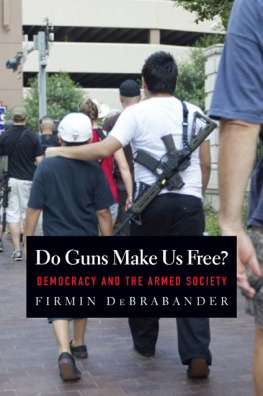
CONTENTS
To Martin Luther King, Jr.
who preached nonviolence but knew that passive resistance could not be relied on for his own familys protection. King owned several guns but was subjected to the worst kind of gun controland deprived of his basic right to defend himself and his familywhen police in Alabama denied him a concealed carry permit in 1956. When will we learn? The right to bear arms shall not be infringed.
AUTHORS NOTE
We can do better. We must do something.
SENATOR RICHARD BLUMENTHAL (D-CT), December 20, 2012
We must act, we must act, we must act.
ARNE DUNCAN , U.S. secretary of education, January 26, 2013
L ast December a man was pushed onto the subway tracks in midtown Manhattan. He was hit by a train as he struggled to pull himself back up onto the platform.
Fifty-five people were killed by New York City subway trains in 2012, but this incident stood out for one major reason: a freelance photographer whod been standing on the platform snapped a photo of the man just seconds before he was struck. The next morning the photo appeared on the front page of the New York Post.
With the horrific image in hand, the media had a story. This was now an epidemic. Every time someone got hit, the incident was treated as though it were another example of just how lethal the New York City subway had become. And, of course, politicians demanded action. We cannot have incident after incident take place like this without saying we are going to act, said Councilman James Vacca as he called for an emergency hearing. We have to have a plan.
And so a plan was crafted: glass walls could be built from floor to ceiling along the tracks of all 468 stations in the system. Accidents would be stopped and suicidal people would have to find another way to kill themselves. It would big, audacious, and expensiveand it would send a signal to everyone that this epidemic of violence would not be tolerated.
There was only one small problem with all of this: there was no epidemic. In fact, fewer people had been struck by trains that year than the year before, and the number of fatalities was right around the five-year average. The front-page photos and increased media attention had clouded public perception, but the statistics did not lie.
Its human nature to want to do something when confronted with a tragedy. It makes us feel good. It makes us sleep better. It makes people vote for us.
But it often doesnt make a real difference.
There have been several unthinkable tragedies involving guns recently. The media and many politicians tell us that these massacres are happening more frequently than ever before; that America is the most violent country on earth; that our schools are unsafe; that semi-automatic assault rifles are to blame; and that we must do something.
As youll discover in this book, the basic premise of every single one of those claims is wrong. Worse, when we allow these myths to be accepted as fact, we end up focusing so much on the how of these crimesthe weapon itselfthat we stop ourselves from asking the far more appropriate question: why?
Last year in New York City a nanny stabbed to death the two young children she was caring for. It was a gruesome, traumatic incident that shocked the entire city. In the aftermath of this tragedy, the media focused on the nannys background, trying desperately to figure out her motive. Everyone wanted to know if there was something that should have tipped people off or some way to prevent this from ever happening again.
But no one talked about the knife. People intuitively understood that this woman could have used a knife, a gun, or her bare handsthe weapon didnt really matter; it was just a tool. What mattered was not the howhorrific as it wasbut the why.
Unfortunately, when it comes to guns, this kind of sober analysis is usually turned upside down. After someone is shot, the story starts with details about the kind of gun used, the capacity of its magazine, and a rundown of how it was acquired. The why comes later and, even then, we usually hear only what we want to hear. Its easy when the motive fits our preconceived notionsrevenge, greed, money, sex, or drugsbut what about when it doesnt? What happens when we uncover that some of the worst juvenile killers in our history were influencedand in some cases, trained, by entertainment violence, like video games? Do we continue to ask questions and pursue the truth, or do we stop listening because it hits so close to home?
On a Sunday night in December, two days after the Newtown, Connecticut, school massacre (a massacre perpetrated by a boy who reportedly had an obsession with violent video games), David Axelrod, the presidents former top political adviser, was watching a football game and posted an observation on Twitter: In NFL post-game: an ad for shoot em up video game. All for curbing weapons of war. But shouldnt we also quit marketing murder as a game?
Im sure that David Axelrod and I dont agree on much, but the answer to his question, as youll see in Part Two of this book, is an unequivocal yes. The evidence is indisputable that what is different in society now isnt the guns; its the person, the culture, and the cavalier way we treat violence. Without morality and virtue most things in a free society fall apart. But with them, anything is possible.
Of course, that argument is not going to satisfy everyoneespecially those who are predisposed to blaming guns for everything. So, in Part One, I go through all the myths and lies that have been told about guns and the Second Amendment over the last few months and dismantle them, point by point. For example, gun-related mass killings are, thankfully, still incredibly rare. As with the New York City subway incidents, there has been no increase in the frequency of these events, or the number of people who die in them. What has increased, however, is the number of people making the case that Americans should give back some of their liberty in an attempt to buy a little security.
I think I remember someone pretty smart once advising that those who do that deserve neither liberty nor security.
The Founders wrote in the Second Amendment that our right to keep and bear arms shall not be infringed. To infringe means to limit or undermineso youll have to forgive me for being a little skeptical about those who use a tragedy to promote an agenda that culminates in limiting or undermining our right to keep and bear arms. Besides, the people who talk most about the need to regulate guns are also usually the same people who know the least about them. Ask these gun prohibitionists about the Second Amendment and theyll usually mention hunting or sport shooting. Ive searched and searched the Constitution and cant find any mention of how our ability to shoot deer or quail is pertinent to securing the blessings of liberty.
In my view, the right to bear arms is in the Constitution for three main reasons: self-protection, community protection, and protection from tyranny. Because those are such large, overarching intentions, theyre virtually impossible to destroy all at once. So progressives start small. They introduce commonsense regulations and restrictions that will supposedly save lives. Then, each time the publics attention is captured, they push further. Given enough time, guns and ammunition will eventually become so costly and time-consuming to purchase, maintain, and insure that a ban will no longer be necessary.
And thats what this is really all about: control. Not of guns, but of us. Controlling what we eat and drive, how we heat our homes, and how we educate our kidsthats all small potatoes compared to controlling our overall relationship with government. If progressives can change the Second Amendment from shall not be infringed to no guns except what we allow, then they will have turned the entire Constitution on its head.
Next page

